The Village of Caraorman and the Ruins of the Glass Factory
Caraorman, the Forgotten Village
If you’re looking to embark on a truly unique expedition in the heart of the Danube Delta, make your way to the village named by the Turks as Caraorman, meaning the Dark Forest. This name comes from “kara orman,” which in Turkish means black forest, referring to the ancient oak forest of the same name housed in the village’s northern territory. The Dark or Black Forest in the village of Caraorman is a natural reserve of ancient oaks, a protected area spanning 2,250 hectares and designated a UNESCO World Heritage biosphere reserve.
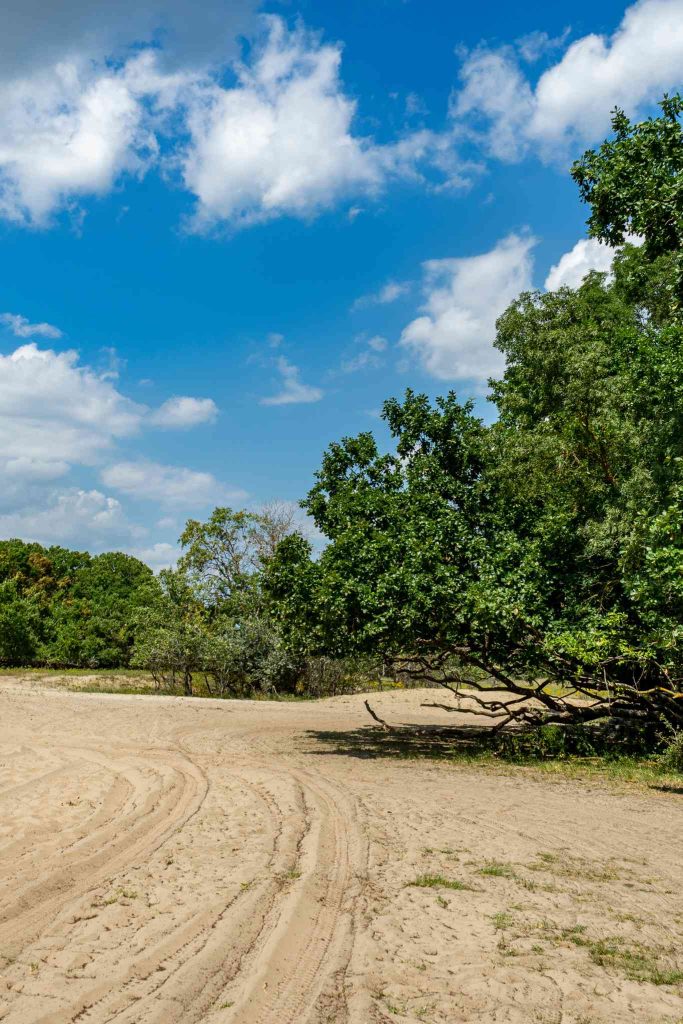
The Glass Factory Ruins
The ruins of the glass factory in Caraorman stand as a testament to the abandonment of the communist project to exploit quartz sand for glass manufacturing and its use in metallurgy, which was abandoned with the arrival of the Revolution. While some locals find the ruins of Caraorman’s glass factory eerily repellent, they are appreciated by tourists passionate about traditional and original locations in the Danube Delta.
The ruins of the glass factory and the degraded structures of the six blocks built for its workers span several hectares, right at the entrance to the village of Caraorman. The skeletons of abandoned concrete constructions start near the shore, with cows, horses, and a few donkeys roaming among the ruins in a desolate and cinematic tableau. The history of the place tells that the village of Caraorman is located on the largest deposit of fine marine-origin sand in Europe.
Demolition projects of the relics were never completed, reducing only to a few halls and the emptying of the factory of all equipment, which had never been used, although they were state-of-the-art at the time of purchase during communism. Currently, locals still hope for the ecological restoration of the area, through the demolition of all derelict buildings and the restoration of the ecosystem.
The Village Forgotten by Time
The fishing village of Caraorman is nestled in the heart of the Delta, in the Crișan commune of Tulcea County, between the Sulina and Sfântu Gheorghe branches, on the Caraorman sandbank. It’s a small, world-forgotten village offering tourists a unique adventure on unconventional trails with unpaved roads. Caraorman retains the tradition of reed-roofed houses and large gardens. The locals of various ethnicities (Romanians, Ukrainians, and Lipovans) are mainly engaged in fishing and animal husbandry. Discover the charm of Caraorman village by taking a ride in one of the old Russian military trucks in the village.
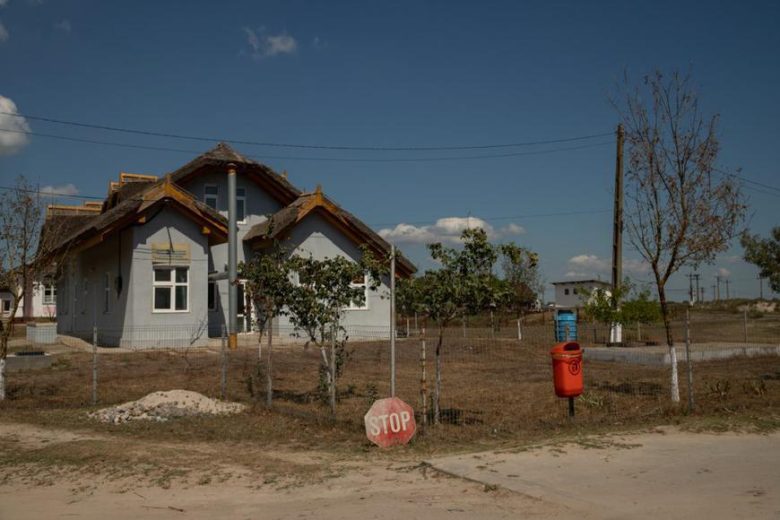
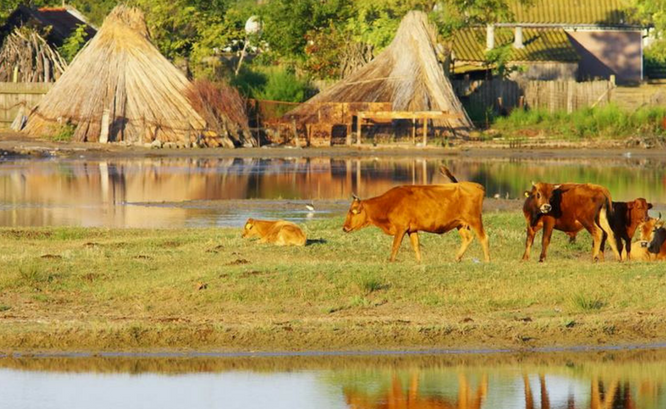
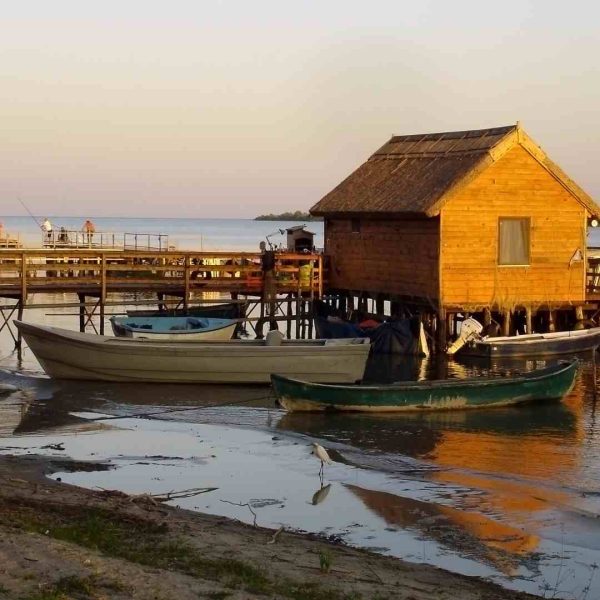
Caraorman Village
The village of Caraorman is renowned for the Dark Forest of ancient oaks, the moving sand dunes, the Kneeling Oak (over 400 years old), the Hunters’ Fountain (a concrete and mosaic reproduction of Brâncuși’s Table of Silence), Caraorman’s beach, and nearby sport fishing spots.
However, to reach the natural tourist attractions, you must cross the abandoned area of the glass factory ruins, which line the road from the landing stage to the village center. You can hire a local guide for access, transportation, and invaluable information about every step of your journey.
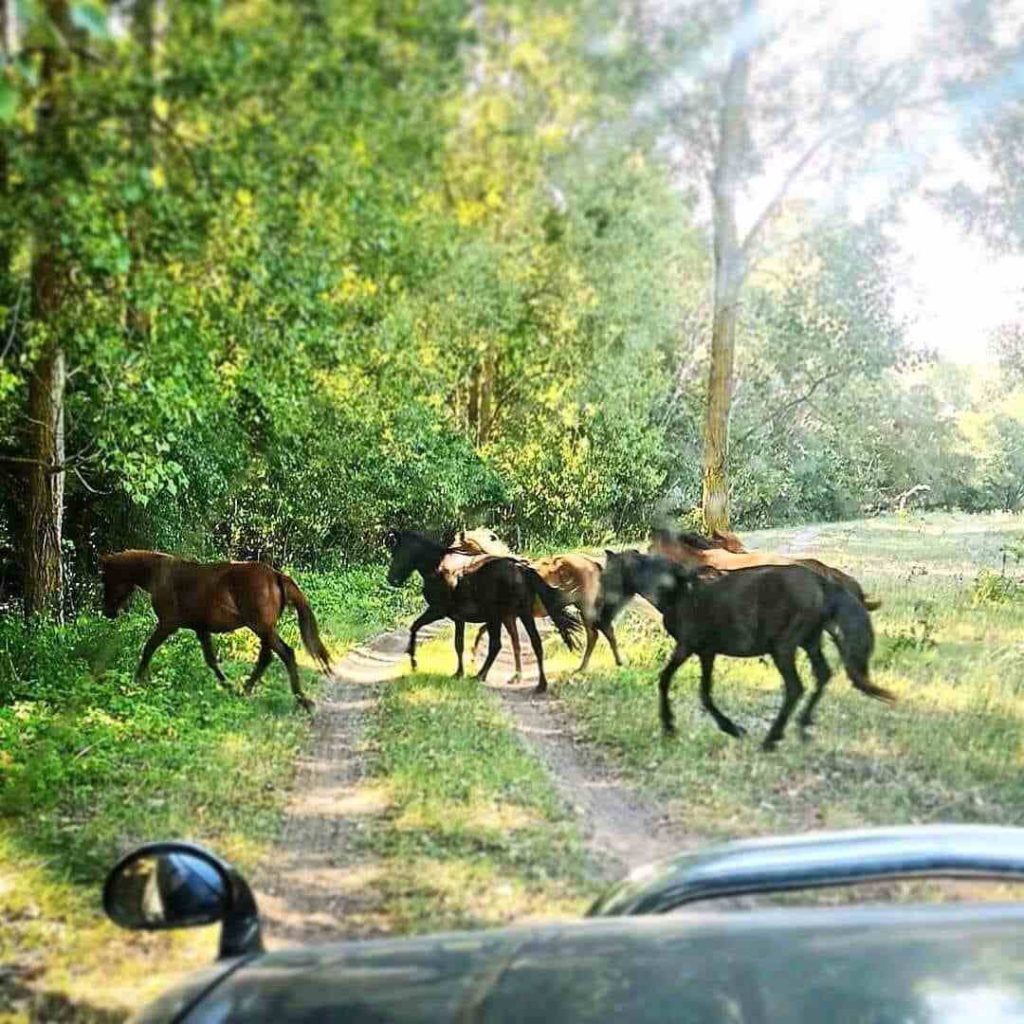
The Crișan-Caraorman Canal, part of the same large-scale industrial project to exploit the sand dunes near the village of Caraorman (begun in 1979), measures over 80 meters in width and is the widest canal in the Delta. Fishing enthusiasts and sport fishermen will find that the canal’s route has designated sections where certain fish species are caught: asp, perch, pike, catfish, carp, pikeperch, bream, crucian carp, roach, etc.

In the village, local transport is done by cars and tractors with trailers, like a Romanian safari on the sand dunes. On the canals, you’ll enjoy the emblematic birds of the Danube Delta, including pelicans, herons, swans, cormorants, kingfishers, black-headed gulls, marsh harriers, or swallow-tailed kites.

